
First Aired: September 16th, 1987
Status: Ended
Network: BBC Two
Summary: This wonderful series goes behind the high redbrick walls of Chilton Foliat in Berkshire, where Harry Dodson carefully recreates a traditional Victorian kitchen garden. Using traditional tools Harry painstakingly transformed the weed-choked ground into a gardener's and cook's delight solving many horticultural mysteries along the way and showing how gardeners dealt with pests and how they grew exotic fruits and vegetables for the household all year round.
Next Episode:
All episodes are aired.
Episode Statistics:
# of Episodes: 13
# of Episodes I watched: 0
# of Episodes I haven't watched: 13
Last Episode I watched: -
Episode Summaries
My Season Progress:
0 %
Season 1
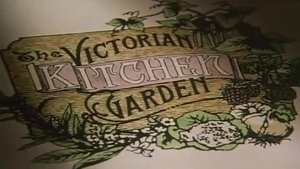
Episode 1: The Beginning
Air Date: September 16th, 1987
Summary: Once every big house had its walled kitchen garden. In an age before imports and deep freezers, the head gardener and his staff had to supply the household throughout the year. Today most walled gardens lie derelict. To uncover the secrets of the great Victorian gardeners, restoration was begun on a kitchen garden in Berkshire. With the help of a rich legacy of gardening manuals, plans were made to grow vegetables and fruit similar to the Victorians and to revive forgotten crafts and skills - hoping to find out what it was like to feed a large country estate without modern technology and well-stocked supermarkets.
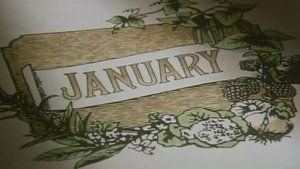
Episode 2: January
Air Date: September 23rd, 1987
Summary: Harry remembers his life in the walled gardens and his rise from garden boy to head gardener. In the garden he tackles the winter jobs - building hot beds to bring on early crops of lettuce and carrots and 'tagging and nailing' fruit trees. Peter explores the garden's greatest asset - its four walls. He examines the elaborate system of boilers and pipes that heated the glasshouses, and unearths a very grand ice house.
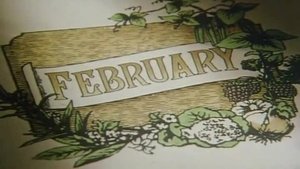
Episode 3: February
Air Date: September 30th, 1987
Summary: Winter locks the garden in its icy grip. It is an opportunity for repairing tools. Peter shows the range the Victorian gardener had at his disposal. Harry turns his attention to the forcing house where he plants chicory, asparagus and rhubarb. The Victorians had a taste for the delicate flavour of forced vegetables. They developed new methods of cultivation and gave the country its first purpose-made, artificial fertiliser.
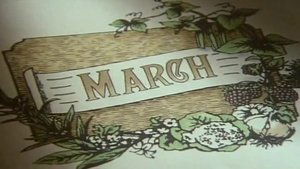
Episode 4: March
Air Date: October 7th, 1987
Summary: Harry and Peter draw up a cropping plan for the coming year. Harry expects to plant over 25 different crops including what he calls his 'fussy pieces', salsify and scorzonera. Tracking down the Victorian varieties takes Peter to a refrigerated seed bank near Stratford-on-Avon. Frost threatens the budding peaches, and Harry employs several old methods to protect them - a thatch of yew and laurel, straw mats and drapes of fine tiffany.

Episode 5: April
Air Date: October 14th, 1987
Summary: It was called 'the hungry gap'. While the staff were fed tired offerings from the root store, the head gardener had to play a horticultural conjuring trick to provide his master with luxury vegetables. Harry grows marble-sized potatoes in pots under glass, cuts asparagus from the forcing house, and uncovers seakale shoots, the colour of 'carved ivory'. Using modern equipment, Peter demonstrates the effectiveness of hot beds in advancing young plants. In the glasshouse the peaches make good progress, while at the bottom of the garden a beehive is introduced

Episode 6: May
Air Date: October 21st, 1987
Summary: A wet May frustrates Harry's attempt to sow seeds on the open land. Under glass he starts on the cultivation of what the Victorians called 'the noblest production of the kitchen garden' - the melon. Meanwhile outside Peter demonstrates an armoury of devices used by the old gardeners to combat the menace of birds and mice.
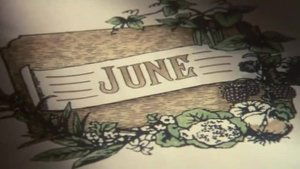
Episode 7: June
Air Date: October 28th, 1987
Summary: 'Flaming June' lives up to its name. Harry is kept busy manipulating the blinds and ventilators of the glasshouses, to protect the emerging tomatoes, cucumbers and melons. Peter shows how the development of the glasshouse allowed the Victorians to grow tropical fruits and flowers hitherto unknown in Britain. In the garden the bees swarm, and Harry tackles slugs with soot, and wireworm with a carrot.
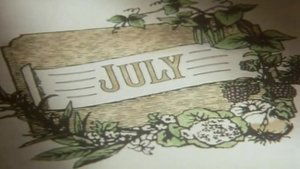
Episode 8: July
Air Date: November 4th, 1987
Summary: The soft fruit is ready for picking - morello cherries and black, red and white currants, red and yellow raspberries. Gooseberries, too, are ripening fast. Peter visits Goostrey in Cheshire where the extraordinary Victorian tradition survives of pitting one gooseberry against another to find the heaviest. Harry feeds his plants with homemade liquid manure, and sprays the trees with 'Bordeaux Mixture' - a fungicide discovered by accident in the vineyards of France. Peter tells the story of the Victorian craze for bedding plants, which one writer described as 'those hideous miles of scarlet geraniums'.
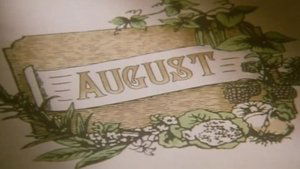
Episode 9: August
Air Date: November 11st, 1987
Summary: The preoccupation of the Victorian gardener during August was getting water to his plants. The invention of the India rubber hosepipe transformed his task. Harry is helped, too, by Chilton's ready supply of spring water. The melons are netted to prevent them falling. The peaches, figs and nectarines are picked for the table or packed in boxes to be sent that same day by train to the owner's residence in London. Peter visits Sawbridgeworth in Hertfordshire to find out more about Thomas Rivers , the great 19th-century nurseryman who provided the country houses with their fruit trees.
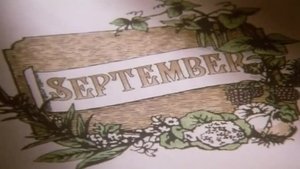
Episode 10: September
Air Date: November 18th, 1987
Summary: September is the month that brings cook the widest choice of fruit and vegetables. Although a time of plenty, little goes to waste. What is not eaten is stored for the winter months. Harry is pleased with the old varieties, the purple podded pea, Couve Tronchuda the Portuguese cabbage, and Kohl Rabi , the German turnip. There is a fine crop of yellow tomatoes, the potatoes have only a trace of blight, and the cucumber glass has produced straight cucumbers. Peter visits Chatsworth to find succulent dessert grapes still being grown, the one crop Chilton has been unable to produce.
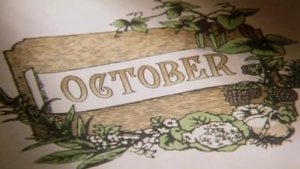
Episode 11: October
Air Date: November 25th, 1987
Summary: One October morning Harry walks to the garden to gather a choice melon and an artichoke-like vegetable called a cardoon. Harry has entered both in the autumn show at the Royal Horticultural Society in London. Peter traces the history of the RHS, the backbone of British horticulture since its formation in 1804, and takes a behind-the-scenes look at the vegetable-judging and fruit-tasting. At Chilton, the Fruit House is filling up. As he has done every year since he came here 40 years ago, Harry provides produce for the Harvest Festival. But this year there will be varieties that have not been seen for a long time.
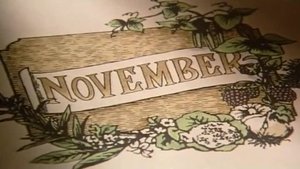
Episode 12: November
Air Date: December 2nd, 1987
Summary: Whenever the family was in its London residence, it still received fresh vegetables from its country garden. Harry shows how he used to pack a hamper to be put on a train and delivered to cook in London the same morning. Today that hamper is destined for the kitchen of Restaurateur Stephen Bull , who gives a modern interpretation to cooking the old varieties.

Episode 13: December
Air Date: December 9th, 1987
Summary: Christmas occupies much of the head gardener's time. Harry ensures he has a plentiful supply of produce for the festive meals by stockpiling well in advance. In the forcing house chicory and rhubarb are ready, and in the glasshouse there are prized pineapples. Harry also gathers quantities of holly and ivy to make elaborate garlands and wreaths for the Big House. But this is now the final month of the project and Peter and Harry look back over the achievements of the last year and reflect on what the garden has meant to them.
Information about series and episodes are provided by TMDB API. If you think that episode information is wrong or missing, please click here to request an update. After your request, update process can take up to 30 minutes.

